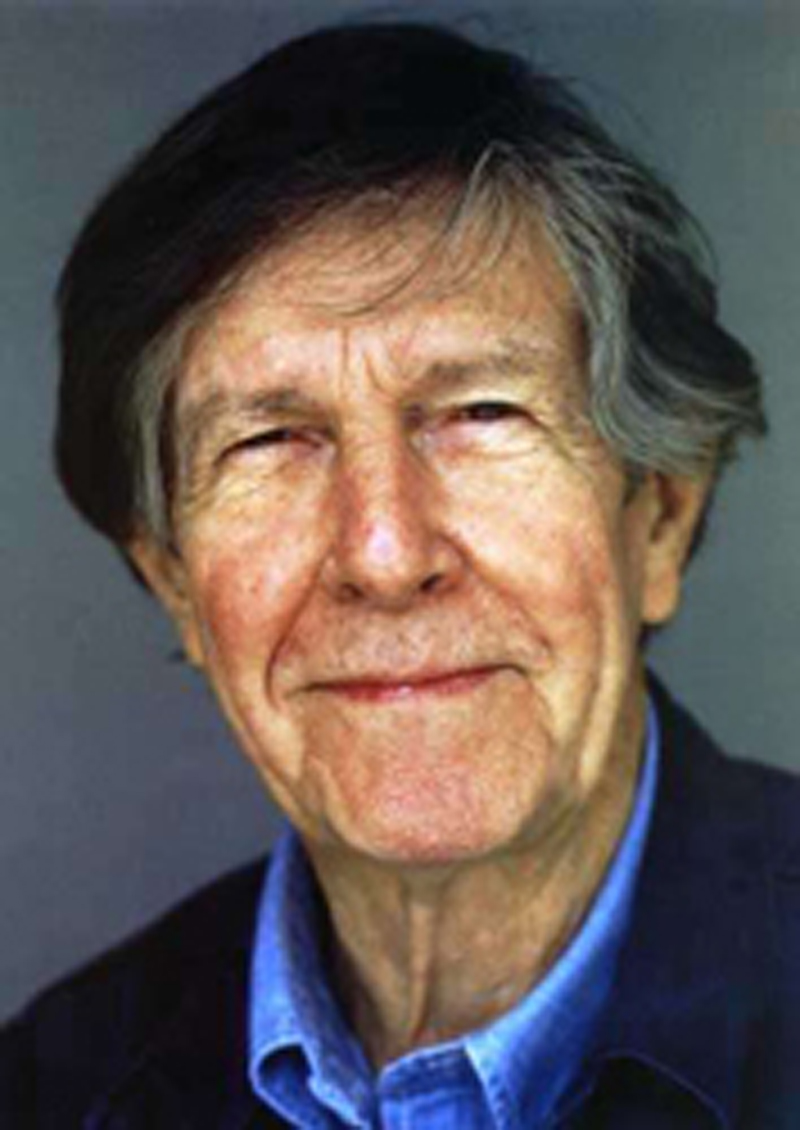John Cage‘s 1992 score for FOUR6 asks each player to choose 12 separate sounds, and then simply lists a series of start and stop times within a 30-minute frame (3’40” 4’55”, for example), leaving everything else up to the performer. On a recent quiet Sunday evening in a Laurelhurst living room, rehearsing for this Friday’s performance, harpist Melissa Walsh first establishes a bucolic mood—until Stuart Dempster rattles a xylophone mallet among the pipes of his trombone, Neal Kosaly-Meyer barks “Hah!”, and William O. Smith produces a similar high squeak on his clarinet. As the piece continues, even Walsh’s pretty harp starts to sound ominous surrounded by the sepulchral trombone, shrill clarinet, and, most creepily, Kosaly-Meyer’s throat-shredding vocal acrobatics—a sort of primal squall, something like what you might imagine the hideous fetus-thing from Eraserhead would sound like attempting an aria. Gradually it becomes clear he’s singing something, as phonemes coalesce into words. They’re from Finnegans Wake—more precisely, from a text-piece Cage created out of extracts from Joyce’s novel. Much of the music of Cage, a Zen devotee, evokes a sort of serene quiescence, but not this realization of FOUR6—it’s stark and nightmarish, and the sudden sounds don’t so much interrupt the half-hour blank canvas of silence as rend it. Each of the four musicians will also contribute a solo to Friday’s concert. Walsh will play one of those serene pieces, the gently rippling In a Landscape (Cage for people who don’t think they like Cage); Smith offers the early-’30s Clarinet Sonata (including additional effects suggested by Smith to, and OK’d by, the composer himself); and Dempster will play a solo drawn from the boisterous Concert for Piano and Orchestra. The resourceful Cage similarly specified that Kosaly-Meyer’s part in FOUR6 could be played alone under the title ONE7, so he will. It’s the first of a number of performances Kosaly-Meyer is organizing to mark Cage’s centennial (and the 20th anniversary of his death), carrying on the local legacy of the two years (1939–41) the composer spent as an accompanist and musical experimenter at Cornish College.
CORRECTION: Kosaly-Meyer clarifies: “ONE7 was first composed as a solo (dedicated to Pauline Oliveros for her 60th birthday), and the additional three parts to make FOUR6 were composed later for the occasion of what turned out to be Cage’s last public performance in Central Park, July ’92.
Also, I’m performing an entirely separate realization of the part for the solo version. It’s also derived from Finnegans Wake, but is a very different piece, and definitely not something which will conjure the same sort of Lynchian associations.” Thanks, Neal!







